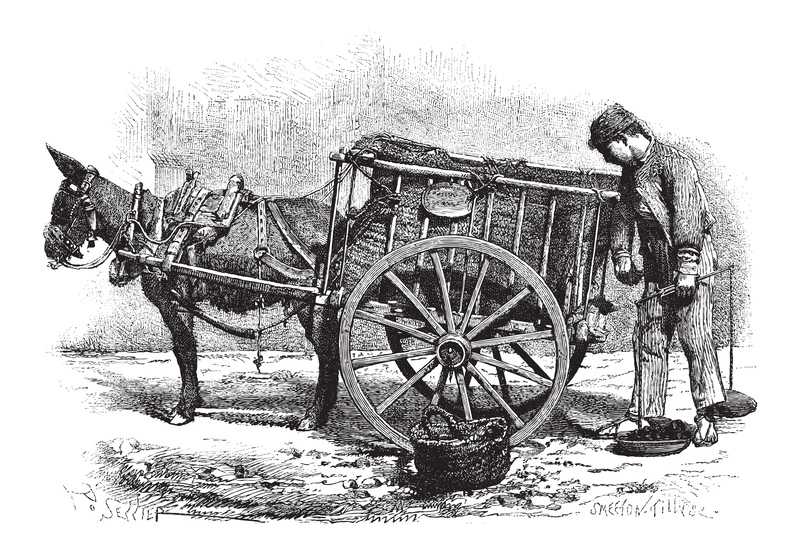The Eco-Guide to Responsible Pots and Pans Disposal
Do you have a collection of old, worn-out, or unwanted pots and pans gathering dust? You're not alone! In our journey toward greener kitchens, responsible disposal of cookware is often overlooked. This eco-guide to responsible pots and pans disposal will help you make informed, environmentally friendly choices -- keeping your cookware out of landfills and supporting a more sustainable world.

Why Responsible Cookware Disposal Matters
Pots and pans are sturdy kitchen essentials, but eventually, they wear out or are replaced due to damage, upgrades, or changes in cooking style. Unfortunately, improper disposal can cause significant environmental harm. Here's why eco-friendly management of old pans and pots is so important:
- Heavy landfill burden: Each year, millions of cookware items wind up in landfills, taking decades or even centuries to break down.
- Material wastage: Cookware often contains valuable metals like aluminum, copper, and stainless steel that could be recycled.
- Toxic elements: Some non-stick coatings (especially older Teflon cookware) can leach harmful chemicals if not handled correctly.
- Resource inefficiency: Disposing of pots and pans improperly squanders resources that could be reused or repurposed.
Assessing Your Old Pots and Pans: When Is It Time to Say Goodbye?
Before rushing to dispose of your old cookware, it's essential to determine whether a pan is truly at the end of its life. Here are common signs that it may be time to let go:
- Warped bottoms: This can lead to uneven heating and unsafe cooking.
- Deep scratches or cracks: Especially with nonstick or ceramic coatings, these can pose health risks and reduce performance.
- Peeling or flaking coatings: Older nonstick surfaces may shed particles into your food -- a definite warning sign.
- Loose or broken handles: Compromised handles make cookware dangerous to use.
- Rust or corrosion: While minor rust can be cleaned, pitted or deeply rusty metal should be retired.
Eco-Friendly Options for Disposing of Pots and Pans
Now that you've assessed your items, let's explore the most responsible ways to discard unwanted cookware. Implementing one or more of these methods can limit waste and maximize sustainability:
1. Donate Usable Cookware
If your old pots and pans are still in safe, usable condition, donation is the most eco-friendly disposal option. Many charitable organizations, thrift stores, and shelters accept gently used kitchenware, including:
- Goodwill and Salvation Army drop-off centers
- Homeless shelters and women's shelters
- Local food banks and community kitchens
- ReUse or upcycling centers
2. Recycle Pots and Pans Responsibly
If your cookware is unfit for reuse, recycling is crucial for minimizing environmental impact. Most pots and pans are made from recyclable metals such as aluminum, cast iron, copper, or stainless steel. Here's how to recycle them effectively:
- Contact your local recycling center: Many public recycling centers accept metal cookware, though you may need to remove plastic, rubber, or glass parts first.
- Scrap metal dealers: Professional recyclers buy or accept metal pots and pans and ensure they are processed correctly.
- Specialized recycling programs: Some cookware manufacturers offer take-back initiatives for recycling their products.
3. Upcycle and Repurpose Creative Ideas
If you're feeling crafty, upcycling old cookware keeps them out of the landfill and gives them new life. Here are some ideas for repurposing pans and pots:
- Garden planters: Drill drainage holes and fill with soil for a quirky outdoor container garden.
- Storage bins: Use large pots to organize garage tools, craft supplies, or toys.
- Art projects: Turn old skillets into wall clocks, chalkboards, or rustic home decor.
- Bird feeders or baths: With minimal modification, pots make unique outdoor features.
4. Manufacturer Take-Back and Trade-In Programs
As sustainability gains momentum, some cookware brands are stepping up. Look for:
- Mail-in recycling programs: Certain manufacturers (like Calphalon, Tramontina, and GreenPan) provide mail-back recycling for their products.
- Trade-in deals: Occasional promotions allow you to send in old items for a discount on new purchases.
- Retailer recycling drives: Retailers like Sur La Table and Williams-Sonoma sometimes host cookware recycling events.
5. Curbside Pickup (with Caution)
While some areas allow metal cookware in curbside recycling bins, this isn't true everywhere. Always:
- Review your local recycling guidelines
- Prepare items properly by removing non-metal parts
- Place only accepted materials in the bin
Special Considerations: Nonstick and Specialty Cookware
Nonstick, ceramic, and other specialty cookware require extra care at end of life. Here's how to handle them:
Recycling Nonstick Cookware
The PTFE (Teflon) or ceramic coatings on nonstick cookware complicate recycling, as they aren't compatible with standard metal processing.
- Check for manufacturer recycling programs or mail-in options.
- If unavailable, some specialized recyclers can separate the coating before processing the metal.
- Remove plastic parts, and never place coated pans in regular recycling unless explicitly accepted.
Older nonstick pans (pre-2013) may contain PFOA, which is harmful if released into the environment. Take extra precautions and never burn or incinerate these pans.
Glass and Ceramic Cookware
Glass and ceramic baking dishes and pans are not the same as recyclable glass bottles or jars. They have different melting points and typically can't go curbside. Options include:
- Donate if in usable condition
- Use in craft or mosaic projects
- Look for specialty recycling if available in your area
Responsible Pots and Pans Disposal: Step-by-Step Checklist
For easy reference, follow these eco-friendly cookware disposal steps:
- Assess condition: Determine whether the item is reusable, recyclable, or needs to be discarded.
- Clean thoroughly: Prepare for donation or recycling by removing all food debris.
- Separate materials: Remove plastic, rubber, or wooden handles before recycling.
- Seek local guidance: Consult community recycling guidelines or find a nearby scrap metal dealer.
- Donate first: Prioritize giving usable pans to others in need.
- Recycle when possible: Use specialized recycling for coated, glass, or ceramic cookware.
- Upcycle creatively: Consider garden, art, or storage projects for pans that can't be recycled.
- Check for manufacturer programs: See if your brand offers take-back or discount incentives.
- Avoid landfill as last resort: Only throw away cookware if no reuse or recycling options exist.
Avoiding Landfill: Eco-Friendly Shopping Tips for Next Time
Ultimately, responsible pots and pans disposal begins with conscious shopping. When purchasing new cookware, opt for brands and products designed for longevity and recyclability. Consider:
- Uncoated stainless steel, cast iron, or copper: These are durable, naturally non-toxic, and endlessly recyclable.
- Brands with recycling or trade-in policies: Supporting these companies encourages broader industry shifts.
- Repairable designs: Some cookware offers replacement handles, lids, or components to extend lifespan.
- Buy only what you need: Avoid impulse purchases to reduce eventual waste.
By choosing eco-friendly kitchenware and proper disposal methods, you help close the loop for a greener planet.

FAQs: Pots and Pans Recycling and Disposal
Can I put old pots and pans in my curbside recycling bin?
Not always. Most curbside pickups only accept recyclable metals and may reject nonstick, glass, or ceramic pans. Always check your municipality's rules before placing cookware in the bin.
What if my pans have plastic or wooden handles?
Remove handles or non-metal parts before recycling. Handles themselves may be accepted in plastic or wood recycling, depending on your area, but check first.
Can I donate scratched or slightly worn pans?
As long as the cookware is safe, clean, and functional, many charitable organizations accept gently used items. Deep scratches, loose handles, or flaking coatings exclude items from donation.
Why can't I put glass or ceramic cookware in the recycling bin?
These materials have different melting points compared to typical container glass and can't be processed together. Specialized recycling is required.
Does upcycling really make a difference?
Absolutely! Upcycling reduces landfill waste, encourages creative reuse, and can beautify homes and gardens in unique ways.
Conclusion: Make Responsible Pots and Pans Disposal a Habit
Adopting sustainable practices for cookware disposal protects the planet while setting a positive example for future generations. Whether you're donating, recycling, upcycling, or trading in your old pans and pots, every small step adds up to a cleaner, greener kitchen -- and a healthier earth.
Let's keep our kitchens -- and our world -- free from needless waste. Use this eco-guide to responsible pots and pans disposal whenever you're ready to say goodbye to your old cookware, and inspire others to do the same!